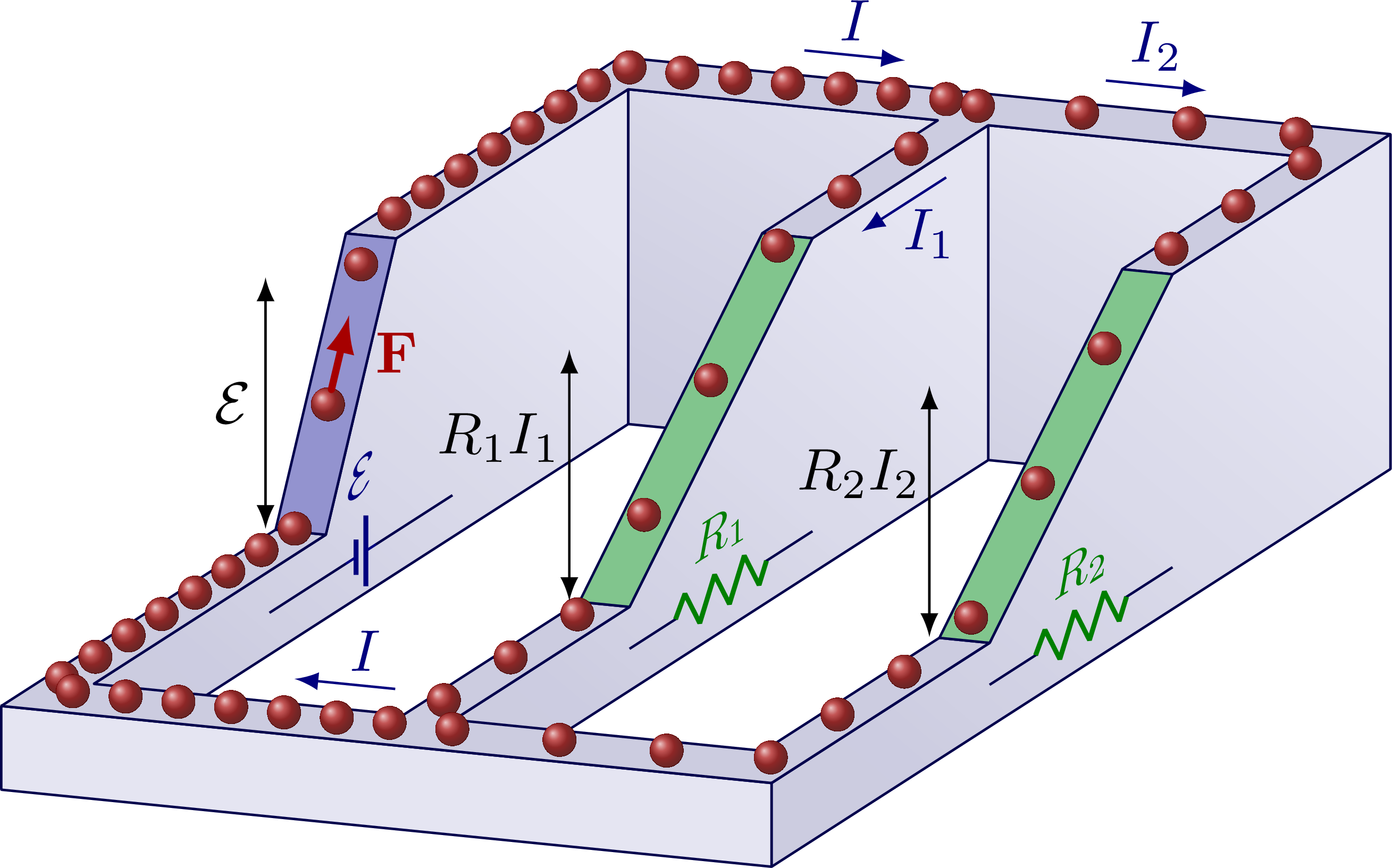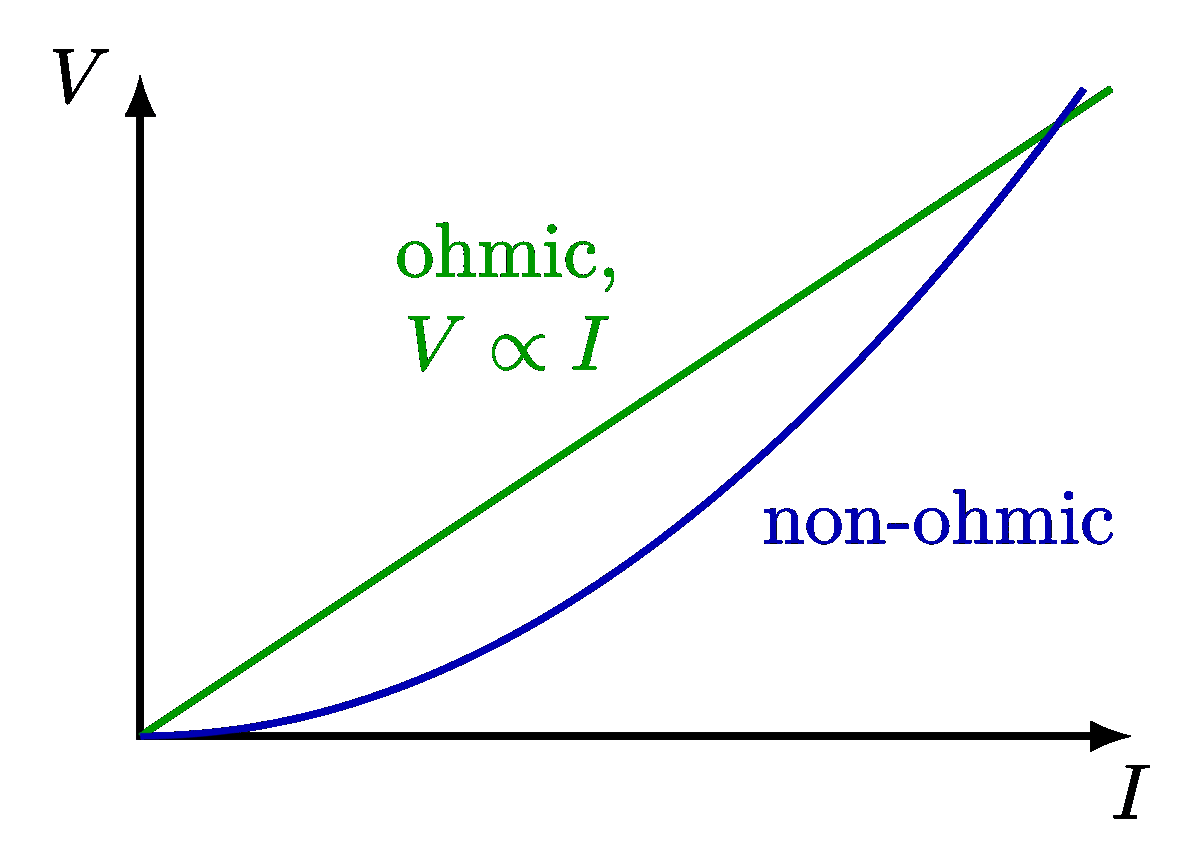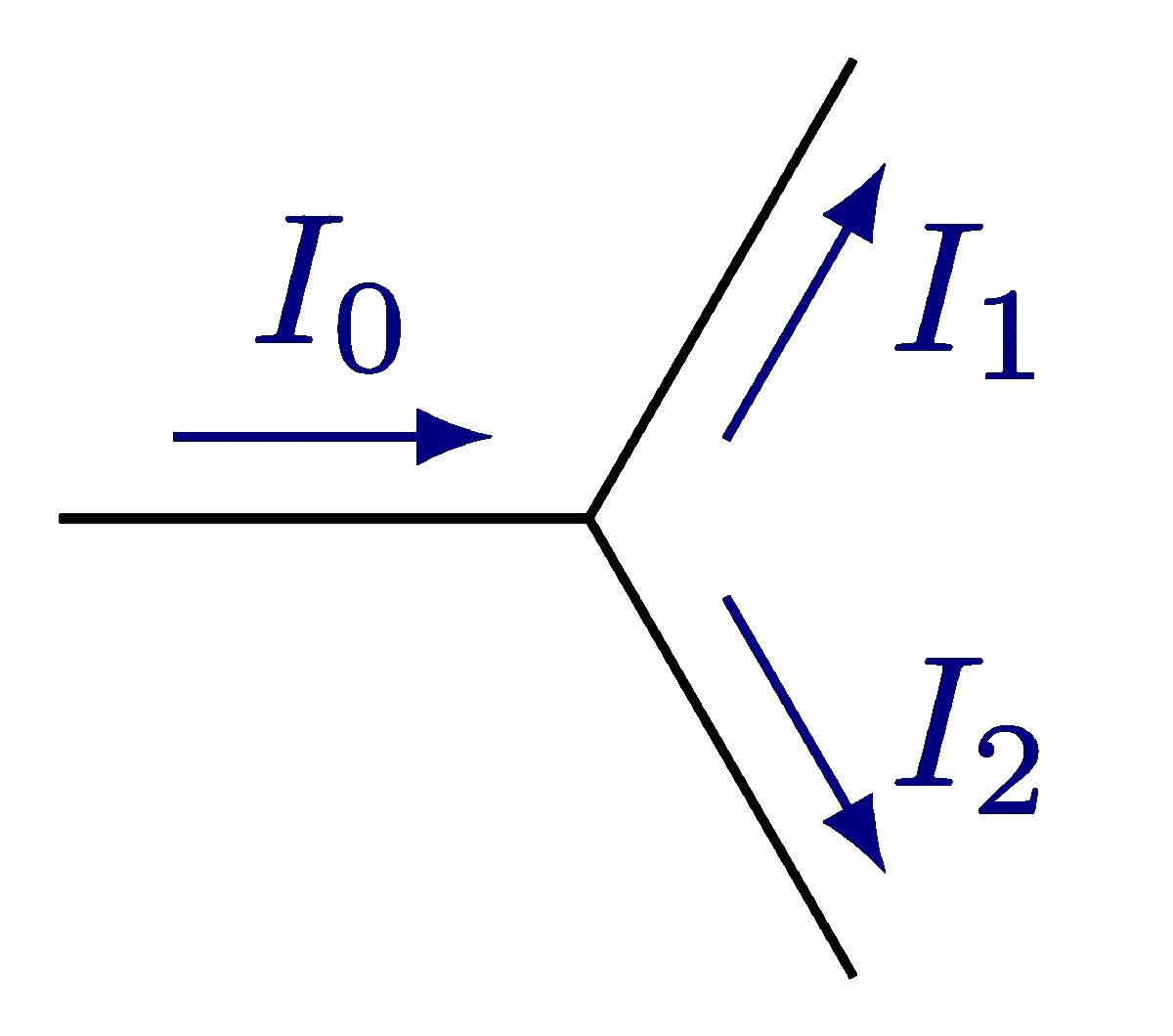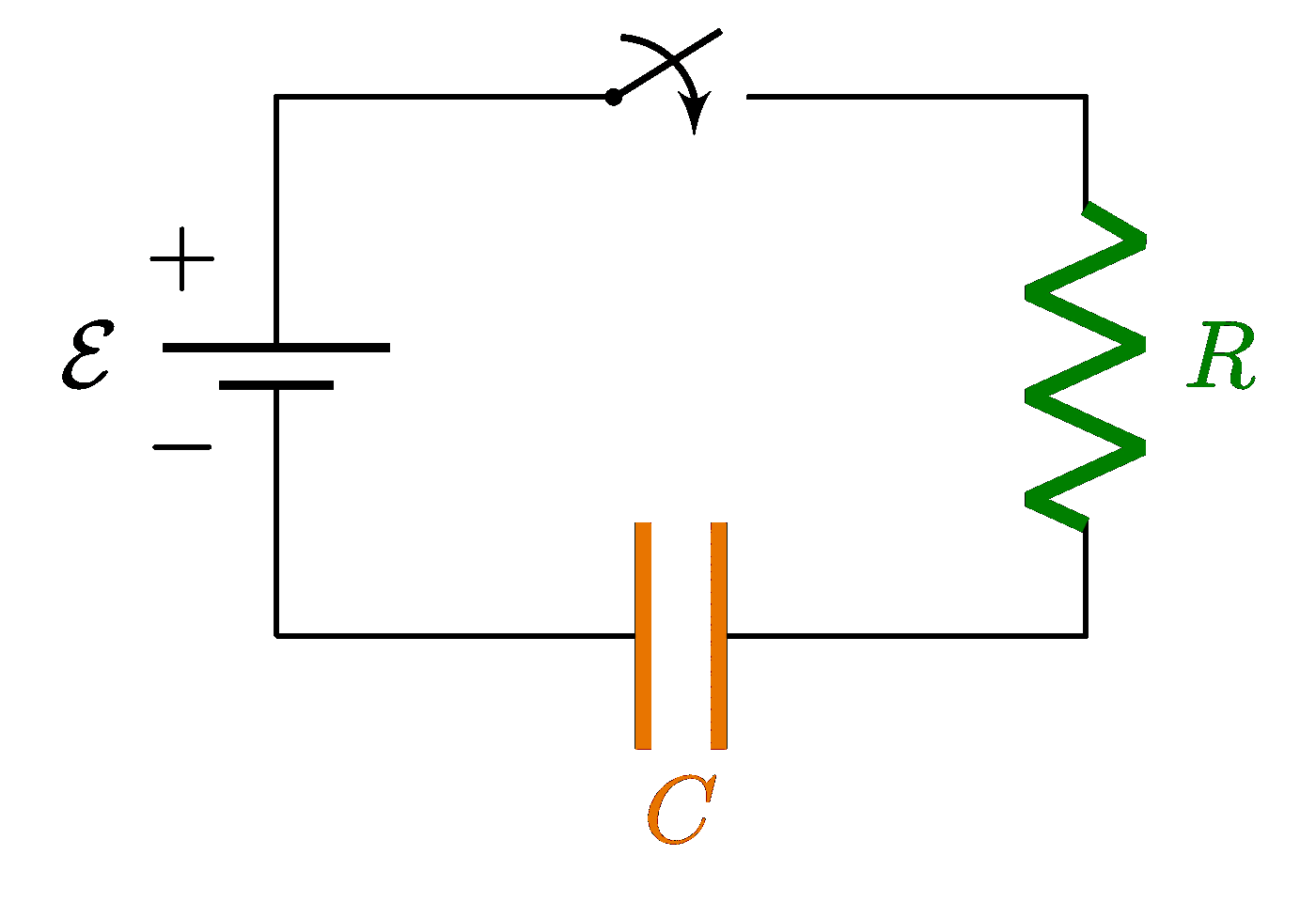The gravitational potential energy analogy for voltage in an electric circuit. Inspired by Eugene Khutoryansky’s YouTube videos. For more related figures, please see these figures on Kirchhof’s laws, or the Electric Engineering category.
Single battery/EMF and single resistor:
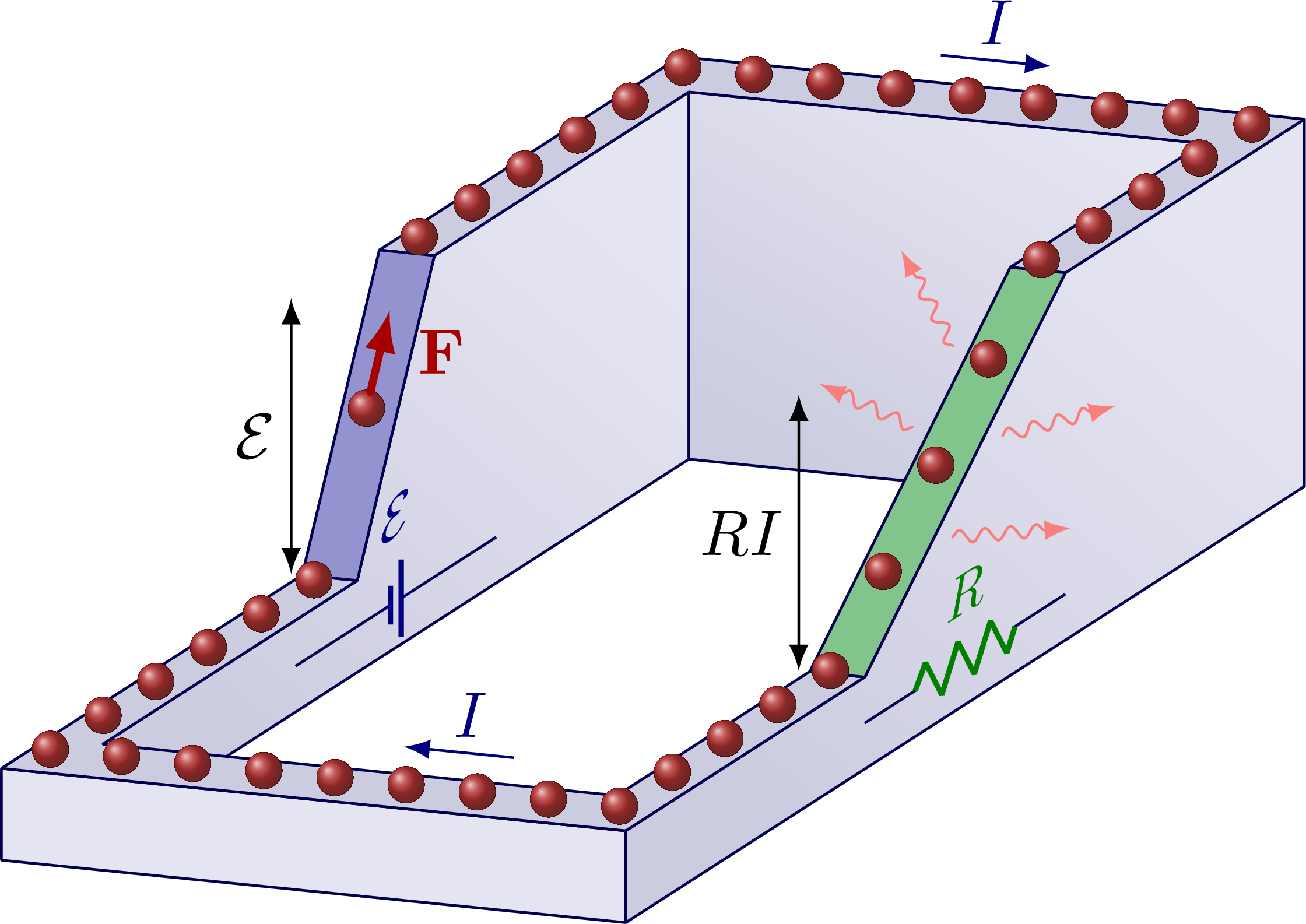
Edit and compile if you like:
% Author: Izaak Neutelings (December 2021)% Inspired by Eugene Khutoryansky% https://www.youtube.com/watch?v=m4jzgqZu-4s\documentclass[border=3pt,tikz]{standalone}\usetikzlibrary{3d} % for canvas is\usepackage{physics}\usepackage[siunitx]{circuitikz}\usepackage[outline]{contour} % glow around text\usetikzlibrary{arrows}%\usetikzlibrary{angles,quotes} % for pic (angle labels)\usetikzlibrary{decorations.pathmorphing,decorations.markings} % for random steps & snake\tikzset{>=latex} % for LaTeX arrow head\usepackage{xcolor}\contourlength{1.5pt}\colorlet{myred}{red!65!black}\colorlet{myblue}{blue!70!black}\colorlet{mydarkblue}{blue!30!black}\colorlet{Icol}{blue!50!black}\colorlet{Ccol}{orange!90!black}\colorlet{Rcol}{green!50!black}\colorlet{sidecol}{blue!50!black!10}\colorlet{darksidecol}{blue!40!black!20}\colorlet{topcol}{blue!40!black!20}\newcommand\EMF{\mathcal{E}}\tikzstyle{EMF}=[battery1,color=Icol,Icol,l_=\small$\EMF$,thin,/tikz/circuitikz/bipoles/length=20pt]\tikzstyle{thick R}=[R,color=Rcol,Rcol,l=\small$R$,/tikz/circuitikz/bipoles/length=22pt]\tikzstyle{force}=[->,myred,very thick,line cap=round]\tikzstyle{radiation}=[-{Latex[length=4,width=3]},red!95!black!50,thin,decorate,decoration={snake,amplitude=1,segment length=4,post length=3}]\tikzstyle{side face}=[mydarkblue,fill=sidecol,rounded corners=0.1]\tikzstyle{top face}=[side face,fill=topcol]\tikzset{shadow face/.style={side face,top color=sidecol,bottom color=darksidecol,shading angle=#1},EFieldLine/.default=30}\begin{document}
Click to download: electric_circuit_voltage_3d.tex • electric_circuit_voltage_3d.pdf
Open in Overleaf: electric_circuit_voltage_3d.tex



